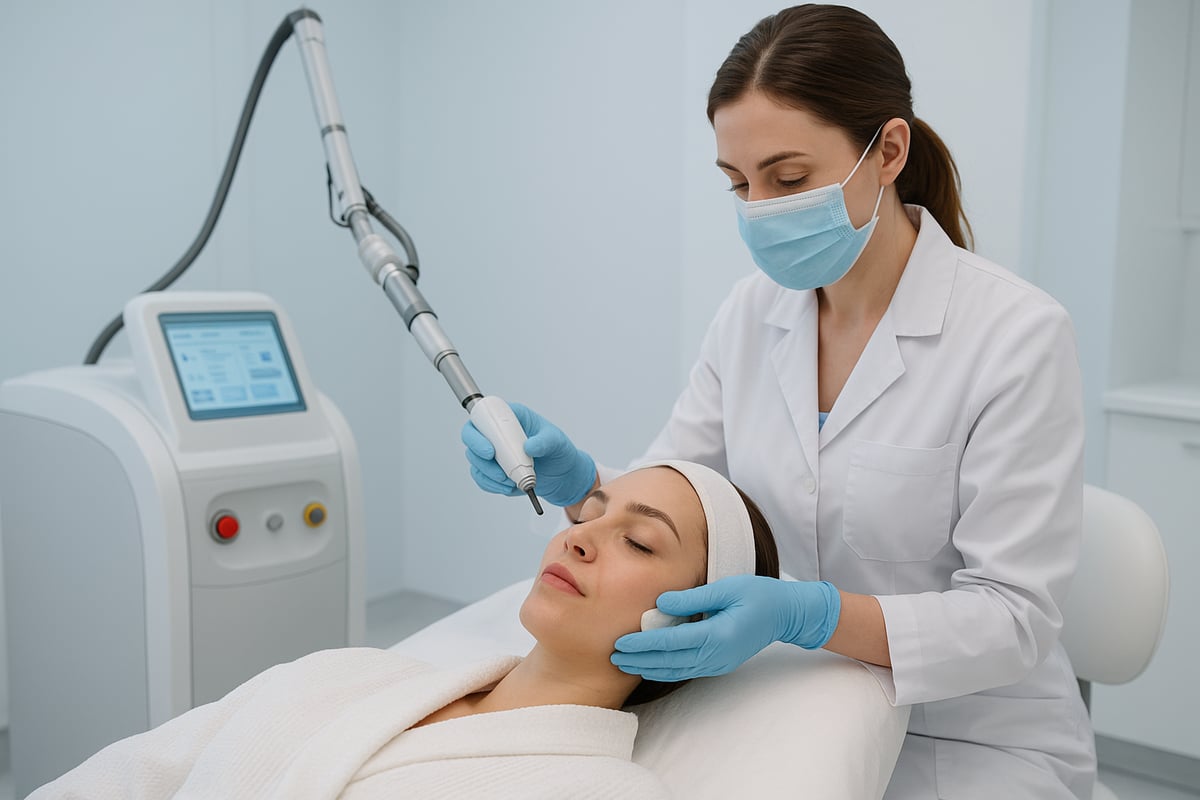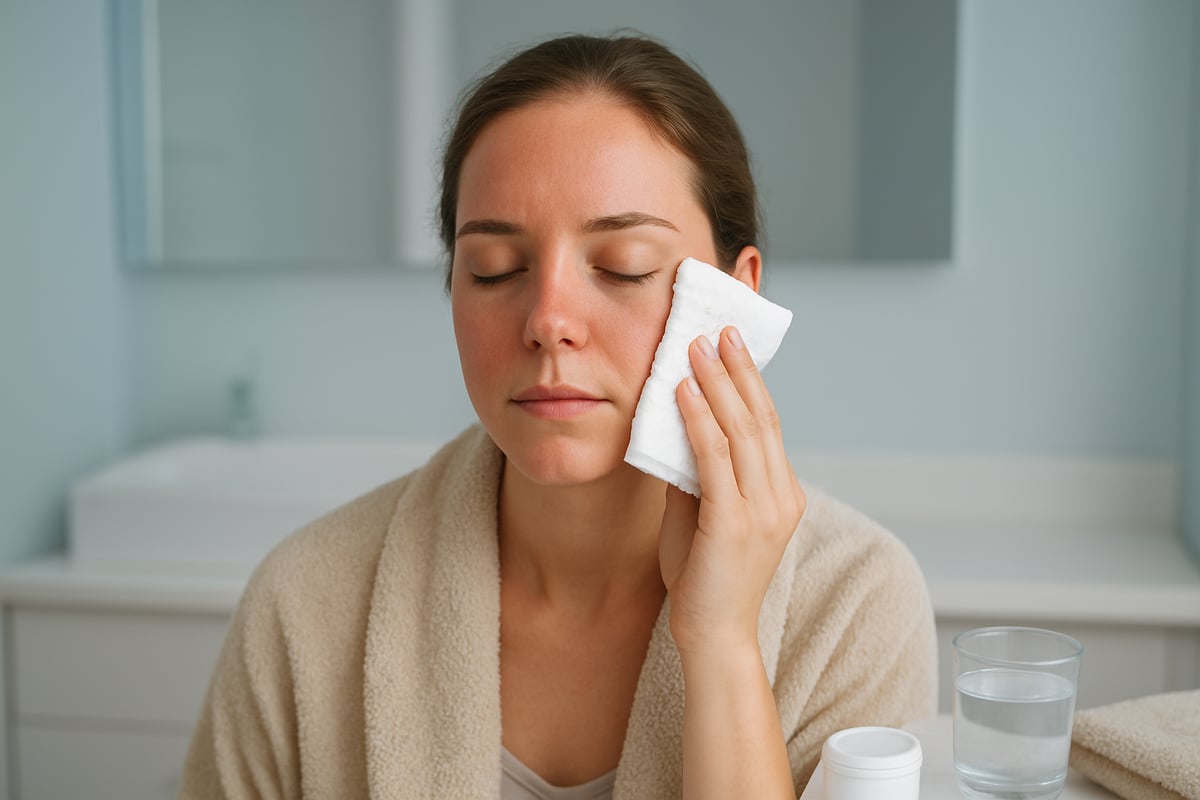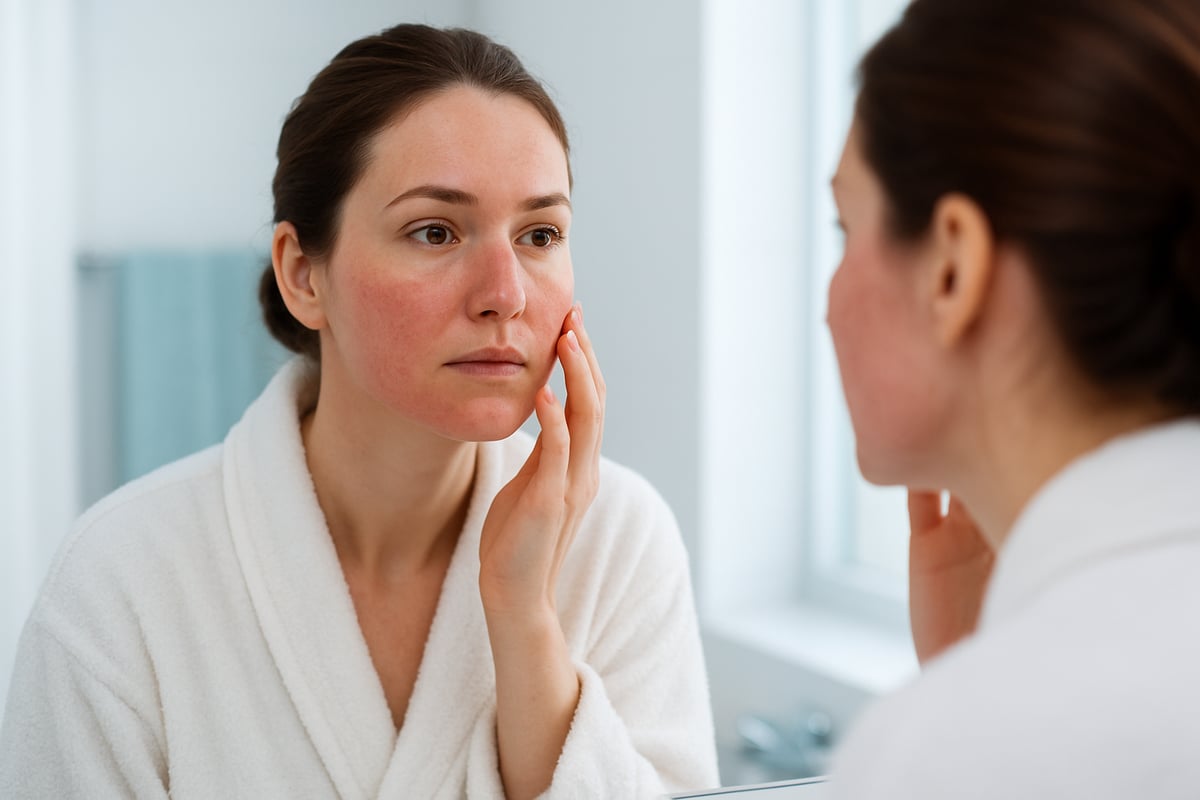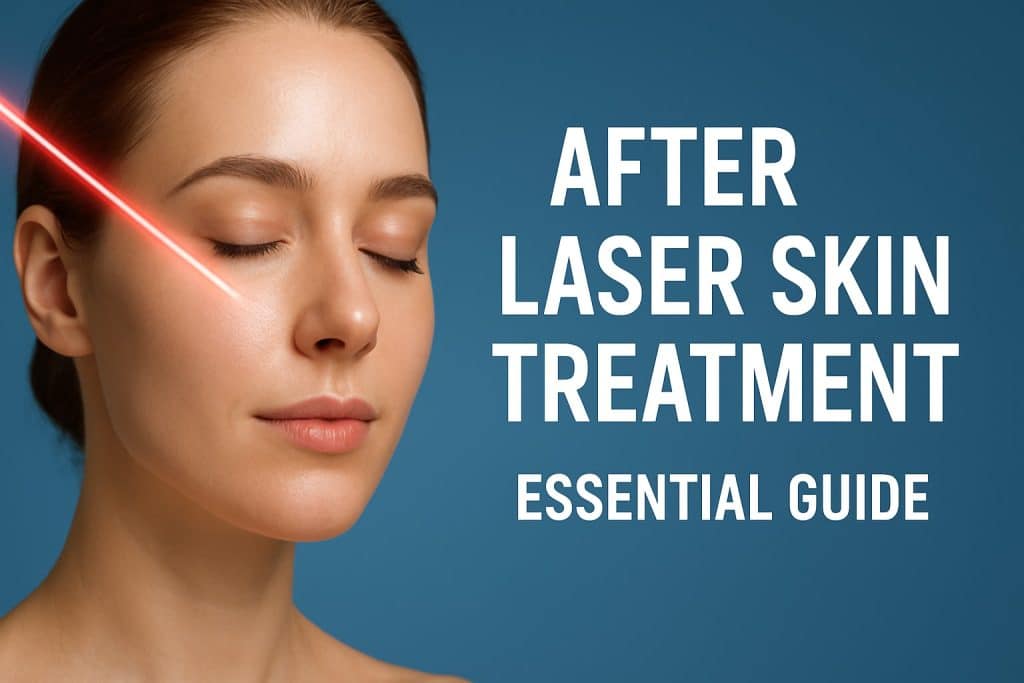Laser skin treatments are more popular than ever in 2025, delivering remarkable transformations and helping countless people achieve radiant, healthy skin. Yet, many patients feel anxious and uncertain about what happens next.
Understanding what to do after laser skin treatment is crucial for healing and getting the best results. This comprehensive guide walks you through every essential step, from immediate aftercare to daily routines, what to avoid, managing side effects, recovery timelines, and expert tips for lasting improvements.
Ready to unlock your skin’s full potential? Follow this expert-backed guide for smooth recovery and optimal results.
Understanding Laser Skin Treatments in 2025
Laser technology for skin rejuvenation continues to evolve rapidly, offering more tailored solutions than ever before. By 2025, patients can choose from a range of precise treatments, each designed for specific skin concerns and recovery profiles. Understanding your options, immediate expectations, and best practices is essential for a smooth experience and optimal results after laser skin treatment.

Types of Laser Treatments and Their Effects
There are three primary categories of laser treatments: ablative, non-ablative, and hybrid lasers. Ablative lasers, like CO2 and Erbium YAG, remove layers of skin for dramatic resurfacing and require longer downtime. Non-ablative lasers, such as MOXI, work beneath the surface, stimulating collagen with minimal recovery. Hybrid lasers, like HALO, blend both types for customizable results.
| Laser Type | Downtime | Typical Uses |
|---|---|---|
| Ablative | 1–2 weeks | Resurfacing, scars |
| Non-Ablative | Few days | Pigmentation, texture |
| Hybrid | Varies | Rejuvenation, scars |
The type of procedure you receive will determine the intensity and duration of after laser skin treatment care. For more details on these technologies and their impact, see Laser Skin Resurfacing in Toronto.
What to Expect Immediately After Treatment
Immediately after laser skin treatment, most patients experience redness, swelling, and mild warmth or sensitivity. These are normal healing responses, not signs of complications. Providers typically apply ice packs, soothing ointments, and sometimes dressings to protect the area.
For example, your clinician may cover your skin with petroleum jelly or antibacterial cream and a soft bandage right after the session. Redness and swelling can last from a few hours to several days. Closely follow all instructions given by your provider after laser skin treatment to ensure safe healing and minimize risks.
Why Proper Aftercare Matters
Proper after laser skin treatment care is crucial for preventing complications such as infection, scarring, or pigment changes. Industry data suggest that up to 30% of complications are linked to inadequate aftercare. When the skin is freshly treated, it becomes highly sensitive and vulnerable to environmental stressors.
Prioritizing careful aftercare leads to faster healing, fewer side effects, and the best possible outcome. Think of your skin as a delicate canvas post-procedure—protecting and nurturing it is just as important as the treatment itself.
Common Myths and Misconceptions
Many people believe they can return to their normal skincare routine right after laser skin treatment, but this is a misconception. Not all redness is a sign of infection; some degree of pinkness or swelling is expected.
Healing time varies based on your skin, the type of laser, and how well you follow aftercare instructions. Overusing drugstore ointments or experimenting with unapproved products can actually slow recovery. For the best guidance, always consult your provider to tailor after laser skin treatment care to your needs.
Step-by-Step Immediate Aftercare (First 24–72 Hours)
The first 24 to 72 hours after laser skin treatment are crucial for ensuring a smooth recovery and achieving your best results. Proper care during this window reduces the risk of complications and sets the stage for healthy, radiant skin. Below, you’ll find a clear, step-by-step approach to immediate aftercare, tailored to help you feel confident and comfortable every step of the way.

Cooling and Comfort Measures
Immediately after laser skin treatment, cooling the area is one of the most effective ways to reduce swelling and discomfort. Most providers recommend using ice packs wrapped in a soft cloth and applying them for 15 to 20 minutes at a time.
- Apply cooling packs every few hours for the first two to three days.
- Never place ice directly on your skin to avoid irritation or damage.
- Many clinics suggest one to five cooling sessions daily, depending on your skin’s response.
Cooling not only soothes the treated area but also helps minimize inflammation and supports the skin’s natural healing process. Be gentle and listen to your skin’s needs during this period.
Cleansing and Dressing the Treated Area
Gentle cleansing is essential after laser skin treatment to prevent infection and encourage proper healing. Use a diluted vinegar solution (one cup of distilled water mixed with one tablespoon of vinegar) or a mild, fragrance-free soap as recommended by your provider.
- Always use distilled water if your tap water isn’t safe.
- Cleanse the area twice daily, using gentle patting motions.
- Change dressings as advised, often multiple times per day.
Avoid picking or scratching the skin, as this can disrupt healing. Following your provider’s instructions for cleansing and dressing will keep your skin protected and comfortable.
Applying Ointments and Moisturizers
Keeping the skin moist is vital after laser skin treatment. Only use ointments and moisturizers specifically recommended by your provider, such as petroleum jelly or antibiotic creams. Avoid applying over-the-counter or natural products unless you have explicit approval.
For sensitive, healing skin, products like Emollience Moisturizer for Post-Laser Care help maintain the moisture barrier and prevent infection.
- Apply a thin layer after each cleanse.
- Reapply as needed to keep the area from drying out.
- Avoid products with fragrances or harsh chemicals.
Moist wound healing has been shown to accelerate recovery and improve results, so don’t skip this step.
Managing Pain and Discomfort
Some discomfort is normal after laser skin treatment, but effective pain management can make recovery much easier. Over-the-counter pain relievers such as acetaminophen are often recommended, while NSAIDs may be restricted depending on your provider’s advice.
- Rest and elevate the treated area when possible.
- Avoid hot environments and strenuous activities for a few days.
- Monitor for increasing pain or sensitivity.
Promptly managing pain and discomfort supports your body’s healing efforts and helps you stay on track with your aftercare plan.
Warning Signs: When to Contact Your Provider
While most symptoms after laser skin treatment are normal, it’s important to recognize warning signs that require medical attention:
- Persistent or worsening redness, swelling, or pain after 48 hours.
- Signs of infection: pus, fever, spreading rash.
- Allergic reactions to ointments or dressings.
- Non-healing wounds or blisters.
If you notice any of these symptoms, contact your provider immediately. Timely intervention can prevent complications and protect your results.
The Critical First Two Weeks: Daily Care & What to Avoid
The first two weeks after laser skin treatment are a pivotal period for your skin’s recovery and lasting results. During this time, your skin is especially delicate and requires consistent, mindful care. By following a structured routine and avoiding common pitfalls, you can help your skin heal efficiently while minimizing risks. This section offers a step-by-step approach for optimal results and comfort.
Establishing a Gentle Skincare Routine
A gentle skincare routine is essential after laser skin treatment. For the first two weeks, cleanse your skin twice daily using only products approved by your provider. Choose fragrance-free, hypoallergenic cleansers to prevent irritation. Always pat your skin dry with a soft towel, never rub, to avoid disrupting the healing process.
Avoid exfoliants, scrubs, and any harsh chemicals until your provider confirms it is safe. Resume gentle moisturizers as directed, focusing on maintaining a healthy moisture barrier. If you are unsure about which products are safe, consult your clinic for personalized recommendations. Keeping your routine simple and gentle helps prevent setbacks and supports healing.
Sun Protection and Environmental Precautions
Protecting your skin from the sun is crucial after laser skin treatment. Direct sunlight can cause hyperpigmentation and slow down recovery. Always apply a broad-spectrum, mineral-based sunscreen with SPF 30 or higher, such as Clear Shield Broad Spectrum Sunscreen SPF 42, before going outside. Even on cloudy days or when indoors near windows, UV rays can reach your skin.
Wear wide-brimmed hats and protective clothing for added defense. Try to stay in the shade whenever possible. Environmental factors like wind and pollution can also irritate freshly treated skin, so limit exposure when you can. Consistent sun protection ensures your results last and your skin remains healthy.
Activities and Habits to Avoid
Certain activities can interfere with healing after laser skin treatment. For at least two weeks, avoid swimming, hot tubs, and saunas, as these can introduce bacteria and delay recovery. Steer clear of makeup on treated areas until your provider gives the go-ahead, since cosmetics may irritate or infect sensitive skin.
Do not engage in vigorous exercise or anything that causes heavy sweating for at least one week. Excess moisture and friction can disrupt your skin’s healing. Never pick, peel, or scratch the area, even if scabbing or flaking occurs. Baths are discouraged, but gentle showers are typically allowed with care.
Supporting Healing with Lifestyle Choices
Your overall health plays a major role in how your skin recovers after laser skin treatment. Drink plenty of water throughout the day to keep your skin hydrated from the inside out. Focus on balanced nutrition, including plenty of fruits and vegetables, lean proteins, and healthy fats to support cellular repair.
Avoid smoking and alcohol during the healing period, as both can impair circulation and slow down your body’s natural recovery processes. Prioritize sleep and manage stress, as rest is vital for tissue regeneration. By making these healthy choices, you give your skin the best chance for a speedy, complication-free recovery.
Managing Side Effects and Common Reactions
Some redness, swelling, and mild discomfort are normal after laser skin treatment. Itching and tightness may also occur. Use cool compresses to ease discomfort, but never scratch or rub the area. Peeling or crusting is a natural part of the healing process, so let it resolve on its own.
Redness may persist for up to two weeks, especially with more intensive treatments. If you experience severe pain, pus, or signs of infection, contact your provider promptly. Monitoring your skin and addressing concerns early helps ensure a smooth recovery and the best possible results.
Why Choose New Skin Laser Clinic for Post-Treatment Support
Choosing expert support can make a significant difference after laser skin treatment. At New Skin Laser Clinic in Toronto, you receive guidance from experienced estheticians and a registered nurse who understand the nuances of post-laser care. Personalized advice and tailored skincare plans help reduce complications and optimize your outcome.

The clinic provides state-of-the-art technology and ongoing support, including convenient consultations for any questions or concerns. Their proven track record and high client satisfaction ensure you feel confident and cared for throughout your healing journey. Trusting your aftercare to knowledgeable professionals leads to safer, more beautiful results.
Recovery Timeline: What’s Normal & When to Expect Results
Understanding the recovery timeline after laser skin treatment is crucial for setting realistic expectations and achieving the best possible results. Proper care can help you navigate each stage confidently, avoid setbacks, and maximize your skin’s transformation.

Typical Healing Stages by Treatment Type
The healing process after laser skin treatment varies depending on the technology used. Ablative lasers, such as CO2, remove the top skin layer and usually require 1 to 2 weeks of initial recovery, with redness sometimes lasting several more weeks. Non-ablative lasers, like MOXI, are less invasive and typically result in just a few days of redness and swelling. Hybrid lasers blend both methods, offering variable downtime based on settings.
| Laser Type | Initial Recovery | Redness Duration |
|---|---|---|
| Ablative (CO2) | 7–14 days | 2–4 weeks |
| Non-Ablative | 1–5 days | Up to 1 week |
| Hybrid | 3–7 days | 1–2 weeks |
It is essential to follow provider instructions for each type. For more detailed instructions, consult Laser Treatment Aftercare Guidelines to support your recovery after laser skin treatment.
Visual and Sensory Changes Over Time
After laser skin treatment, you can expect several visible and sensory changes as your skin heals. In the first few days, redness and swelling are common, often peaking within 24 to 48 hours. Peeling or flaking usually begins around day three to five, revealing new, sensitive skin underneath.
Some patients notice a pink or bronze tint that gradually fades over a few weeks. Slight tightness and itchiness are also normal, but these sensations lessen as healing progresses. By week two, most of the initial side effects have diminished, and the skin starts to appear clearer and smoother. Remember, the timeline can differ based on your specific after laser skin treatment and personal skin characteristics.
When to Resume Regular Skincare and Makeup
Resuming your usual skincare and makeup routine after laser skin treatment requires patience. Wait until all crusting, peeling, and open areas have fully resolved. This typically means at least one to two weeks for ablative treatments and several days for non-ablative options.
Start with gentle, fragrance-free cleansers before gradually reintroducing moisturizers. Only add active ingredients like retinoids or vitamin C after your provider’s approval. Makeup should not be applied until the skin barrier is fully restored to avoid infection and irritation. Following your provider’s timeline is the safest way to rebuild your routine after laser skin treatment.
Monitoring for Complications
Vigilance is necessary after laser skin treatment to ensure your recovery is on track. Watch for signs such as persistent redness, increasing pain, pus, or delayed healing. Pigment changes, such as unexpected dark or light spots, should be reported promptly, especially if you have a darker skin tone.
Regular check-ins with your provider allow for early intervention if any problems arise. Maintaining open communication and documenting your healing progress can help prevent complications from becoming long-term concerns after laser skin treatment.
Long-Term Results and Maintenance
Results from after laser skin treatment become more noticeable as collagen rebuilds over one to three months. Many patients see improvements in texture, tone, and clarity during this time. For optimal, lasting effects, ongoing sun protection and a tailored skincare regimen are essential.
Some individuals benefit from maintenance sessions every six to twelve months, depending on their goals and skin type. To learn more about strategies for preserving your results, explore Maintaining Laser Treatment Results. Consistent aftercare and professional guidance ensure your investment in after laser skin treatment delivers radiant, healthy skin for years to come.
Expert Tips and Advanced Aftercare Strategies
Navigating after laser skin treatment requires more than just the basics. For optimal recovery and lasting results, advanced strategies tailored to your unique needs are essential. Below, you’ll find expert-backed guidance to help personalize and elevate your aftercare routine, ensuring your skin heals beautifully and confidently.
Customizing Aftercare for Skin Type and Concerns
After laser skin treatment, it’s vital to adapt your care routine to your skin’s unique characteristics. Sensitive skin may need extra hydration and minimal ingredients, while oily types benefit from lightweight, non-comedogenic moisturizers. Those with darker skin tones or a history of pigmentation issues require careful avoidance of harsh actives and sun exposure.
- For sensitive skin, stick to fragrance-free and hypoallergenic products.
- Oily skin should avoid heavy creams that might clog pores.
- Individuals prone to hyperpigmentation may need specialized serums as recommended.
Discuss any previous skin reactions with your provider so your after laser skin treatment plan is as safe and effective as possible.
Integrating Professional Follow-Up and Support
Consistent follow-up appointments are critical after laser skin treatment. Your provider will monitor your healing, address concerns, and make timely adjustments to your routine. Early detection of complications, such as delayed healing or pigment changes, can prevent long-term problems.
Many clinics offer both in-person and virtual check-ins for added convenience. These appointments are opportunities to ask questions, review progress, and receive reassurance. Regular follow-up also helps you stay motivated and confident throughout your after laser skin treatment journey.
Advanced Skincare Products and Ingredients
Introducing advanced products after laser skin treatment should be done with care and under guidance. Start with basic, gentle cleansers and moisturizers, then slowly add actives like vitamin C or retinoids only if your provider approves. Ingredients such as hyaluronic acid, ceramides, and peptides help nourish and repair the skin barrier.
Steer clear of products with fragrances, alcohol, or harsh acids early in recovery. For a comprehensive overview of recommended steps, you may find this Post-Laser Resurfacing Care Instructions resource helpful. Always patch test new products before full application during after laser skin treatment.
Addressing Emotional and Psychological Aspects
Healing after laser skin treatment is not only physical but also emotional. Temporary redness, peeling, or visible changes can affect your confidence. Remember, these effects are normal and typically short-lived.
If you feel anxious, reach out to support resources such as online forums or your clinic’s counseling services. Discuss your feelings with your provider, as reassurance and realistic expectations are part of the process. Celebrate small milestones and know that each day brings you closer to your desired outcome after laser skin treatment.
Preventing and Treating Hyperpigmentation and Scarring
Hyperpigmentation and scarring are rare but possible risks after laser skin treatment, especially if aftercare is inconsistent. Apply sunscreen daily, even indoors, and strictly avoid picking or scratching the treated area. Early intervention using prescribed lightening agents or touch-up treatments can correct pigment changes.
If you notice persistent dark spots or textural changes, consult your provider promptly. With proper precautions, most pigmentation concerns can be minimized or reversed, ensuring your after laser skin treatment delivers the radiant results you expect.
When to Consider Additional Treatments or Maintenance Sessions
After your initial after laser skin treatment, you may wonder about future sessions or alternative options. Maintenance treatments, such as annual or semi-annual laser sessions, can extend your results. Signs you may benefit from more treatments include persistent texture issues or recurrence of pigmentation.
If you’re weighing other procedures, such as chemical peels, it’s wise to compare benefits and aftercare requirements. Learn more from this Chemical Peel vs. Laser Treatments resource to make informed decisions. Always consult your provider before scheduling new treatments to ensure your skin is fully healed and ready.

